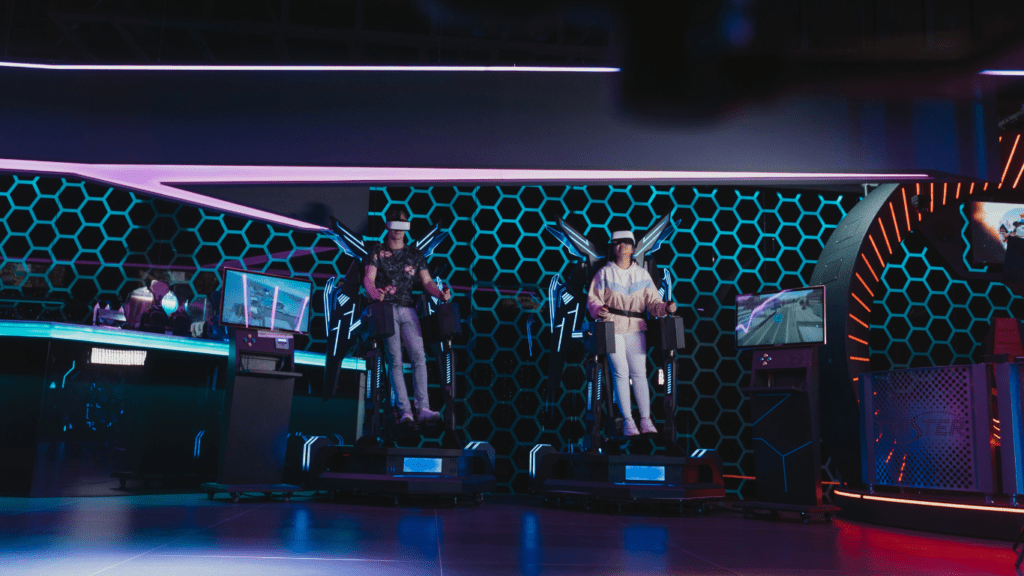Most Hyped Reveals from Major Studios
E3 2026 didn’t pull punches. Sony opened with a full blown cinematic for “Ghosts of Tsushima: Reclaim,” a return to form that added co op storylines and dropped a surprise release window: Fall 2026. Microsoft followed up with gameplay from “Halo: Exile,” a darker, more grounded sequel that wasn’t just another shooter it had weight. Then came Nintendo, doing what it does best. Their reveal of “The Legend of Zelda: Echoes of the Sky” brought the house down. A mix of wind based mechanics and classic puzzle solving, it finally gives us a post TOTK world worth exploring again.
Beyond the franchises, there was heat in the new. Sony’s “Project Siren” teased a moody sci fi RPG that’s part Blade Runner, part Horizon. Xbox revealed “Splitframe,” a time loop cop drama with branching paths and a gritty art style. Nintendo threw in a curveball with “Dreambound,” an IP that mixes platforming with narrative choice think Mario meets Firewatch.
And the trailers delivered. Gone are the days of flashy montages hiding gameplay. Studios leaned hard into cinematic reveals that actually showed us the goods: mechanics, tone, and in engine storytelling. These weren’t hollow teasers. They were bold statements. And fans noticed.
Indie Games That Stole the Show
E3 2026 had its fair share of blockbuster announcements, but it was the smaller titles that sparked real conversation. Amid the polished trailers and marketing flash, a handful of under the radar games broke through with raw creativity and heart. These weren’t just “hidden gems” they were statement pieces from studios that refuse to play safe.
“Hollow Ashes,” from a three person team out of Nova Scotia, mixed dreamlike watercolor visuals with tactical survival mechanics to deliver a gripping debut no one saw coming. It drew standing ovations and immediate publisher interest. And “Signal Lost” a retro futuristic narrative puzzler powered by dynamic storytelling AI left big budget rivals scrambling to rethink their approach to player choice.
A couple of student led projects even hit the main stage. “Echo Rally,” a time loop based racing game with procedurally generated tracks, became a breakout favorite after its 2 minute demo nearly crashed the show floor booth due to crowd surge. These teams didn’t just show up they redefined the conversation around what indie can mean.
If you’re hunting for the next big sleeper hits, keep your eyes locked here. The indies stole the spotlight not because they had scale, but because they had guts.
Gameplay Demos That Raised the Bar

E3 2026 dished out gameplay that wasn’t just cinematic fluff it was raw, real, and occasionally jaw dropping. Studios led with uncut demos, often played live, showing off builds you could almost mistake for final releases. No more smoke and mirrors. The footage from games like “Dusk Protocol” and “NeoCore: Shattered Systems” validated the hype. Even seasoned critics couldn’t ignore when frame rates held strong under chaotic open world physics or when a single AI companion adapted to new player tactics on the fly.
Under the hood, it’s clear developers are punching harder with current gen CPUs and custom GPUs. Lighting effects looked closer to film standards. Draw distances stretched further than we’ve seen without texture pop in. And combat systems traded button mashing for situational depth with dodges, parries, cover systems, and even procedural enemy behavior all feeling more natural.
AI, too, is finally walking the walk. Enemies now flank smartly, refuse to repeat patterns, and react to player hesitation. Some games even shifted their difficulty on the fly based on how players approach problems not just skill level, but play style.
Bottom line: the gap between in engine promise and playable performance is narrowing. These demos weren’t just eye candy they were glimpses of where gameplay is headed in the next two years.
Tech and Platform Updates Worth Knowing
This year’s E3 didn’t just showcase games it showed us where the gaming experience is heading from the ground up. On the hardware front, expect your backpack to get a little lighter. Rumors were solidified as both Nintendo and a major third party manufacturer teased sleek new handhelds meant to compete directly with the growing Steam Deck market. They’re thinner, faster, and clearly trying to fill the portable console hybrid space with fewer compromises.
VR also got a fresh breath. A few major accessories went beyond novelty this time, focusing instead on accessibility and longer session comfort. One key prototype: new haptic gloves demoed alongside an open world RPG that had everyone buzzing. The takeaway? VR is inching past its gimmick phase and slowly blending into more mainstream gameplay.
Cross platform improvements made it clear: your ecosystem matters more than ever. Xbox, Sony, and even some PC storefronts demoed more ways to move between systems without losing saves, purchases, or friend networks. Expect that to keep rolling out through 2026 especially with mobile tie ins becoming standard.
Finally, the cloud just got more serious. Streaming isn’t just a backup plan; it’s getting foregrounded in how publishers deliver demos, patches, and even full games. The big idea: play anywhere, no matter what device you have in front of you. And with new compression tech and edge server rollouts, that might not be just hype anymore.
In a year with walls coming down between platforms and the gear getting smarter across the board, the message is clear: future proofing isn’t optional it’s already happening.
Key Industry Trends from the Show Floor
E3 2026 wasn’t just about what games are dropping it was about how they’re being made, marketed, and evolved. We’re deep into the era of genre fusion, and it’s not slowing down. Expect more games that mash up tactical shooters with life sim mechanics or blend management with narrative depth. It’s riskier design wise, but the payoff is clear: players want layered, unexpected experiences.
Live service models are still the go to for publishers chasing retention, but with a noticeable shift. The bar is higher. Players are burned out from meaningless updates. Now, it’s about community led content, story evolution, and launch day polish. Studios are realizing they can’t fake engagement anymore.
Behind the scenes, more indie developers are being tapped or absorbed into bigger studios. That indie to AAA pipeline is where some of the show’s sharpest storytelling came from. These smaller teams bring a hunger for originality and they’re influencing projects at scale.
Finally, marketing is catching up with modern players. Fan first reveals, playable demos, and early access weekends are the new hype cycle. Studios that drop trailers without gameplay? They’re getting ignored. If players can’t play it, stream it, or mod it early it might as well not exist.
(For a broader overview, make sure to check our E3 Key Takeaways)
Final Observations for Gamers to Watch
If you’re trying to make sense of everything announced at E3 2026, the short version is this: developers are playing the long game. While plenty of big name titles are locked in for late 2026 think franchise giants and the usual headline grabbers a good chunk of what got stage time this year was framed for 2027 or even 2028. Studios are building bigger worlds, with longer dev cycles and more hype runway. That’s a signal: patience will be baked into the next era of releases.
As for what’s wishlist worthy now? Keep a close eye on projects that showed playable builds and deeply involved dev teams. Titles like “Ashfall Protocol” and “Driftlands Reborn” didn’t just drop trailers they offered hands on, transparent showcases. If a game showed up with vertical slices or early access confirmations, it’s worth tracking.
The more interesting shift is how devs are actively reshaping their relationships with players. Instead of pre release marketing hype, we’re seeing more open roadmaps, AMA style panels, and mod support baked in from the start. Fans aren’t just the audience they’re being treated like stakeholders. That’s new. That’s strategic.
E3 2026 didn’t just throw headlines it hinted at the future tone of the industry: slower launches, tighter feedback loops, and a stronger focus on post launch sustainability. Less flash. More staying power. If you’re a gamer who cares about depth and community, this isn’t just a trend it’s a turning point.
For more wrap up insights, check out E3 Key Takeaways.


 Alice McClurg - Content Director Alice McClurg leads the editorial team as Content Director at Jackpot Journey Spot. With a keen eye for emerging trends and a deep understanding of the gambling landscape, Alice curates in-depth articles, event highlights, and game overviews. Her expertise helps guide readers through the ever-evolving world of gambling, ensuring they stay informed and entertained.
Alice McClurg - Content Director Alice McClurg leads the editorial team as Content Director at Jackpot Journey Spot. With a keen eye for emerging trends and a deep understanding of the gambling landscape, Alice curates in-depth articles, event highlights, and game overviews. Her expertise helps guide readers through the ever-evolving world of gambling, ensuring they stay informed and entertained.
